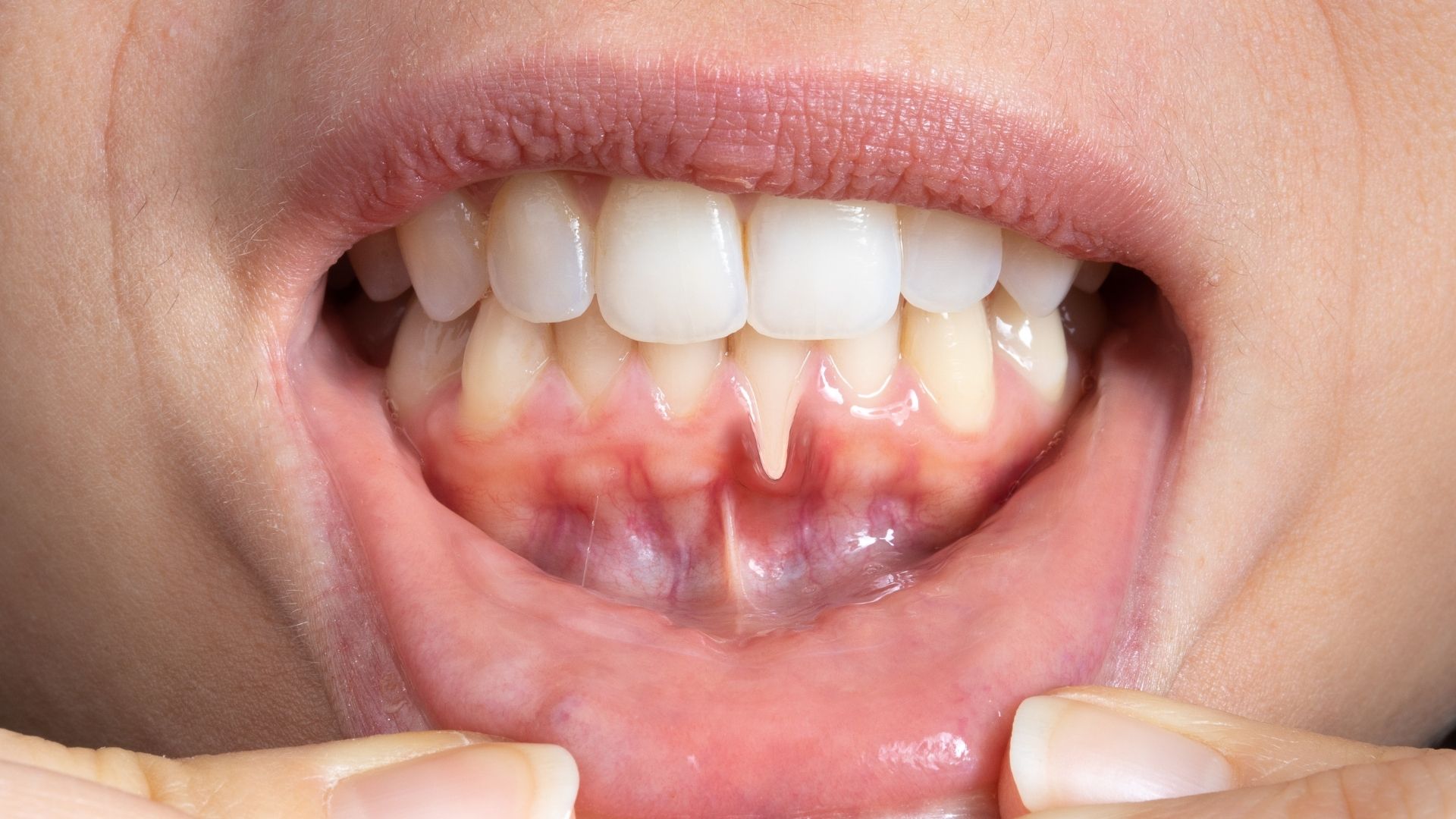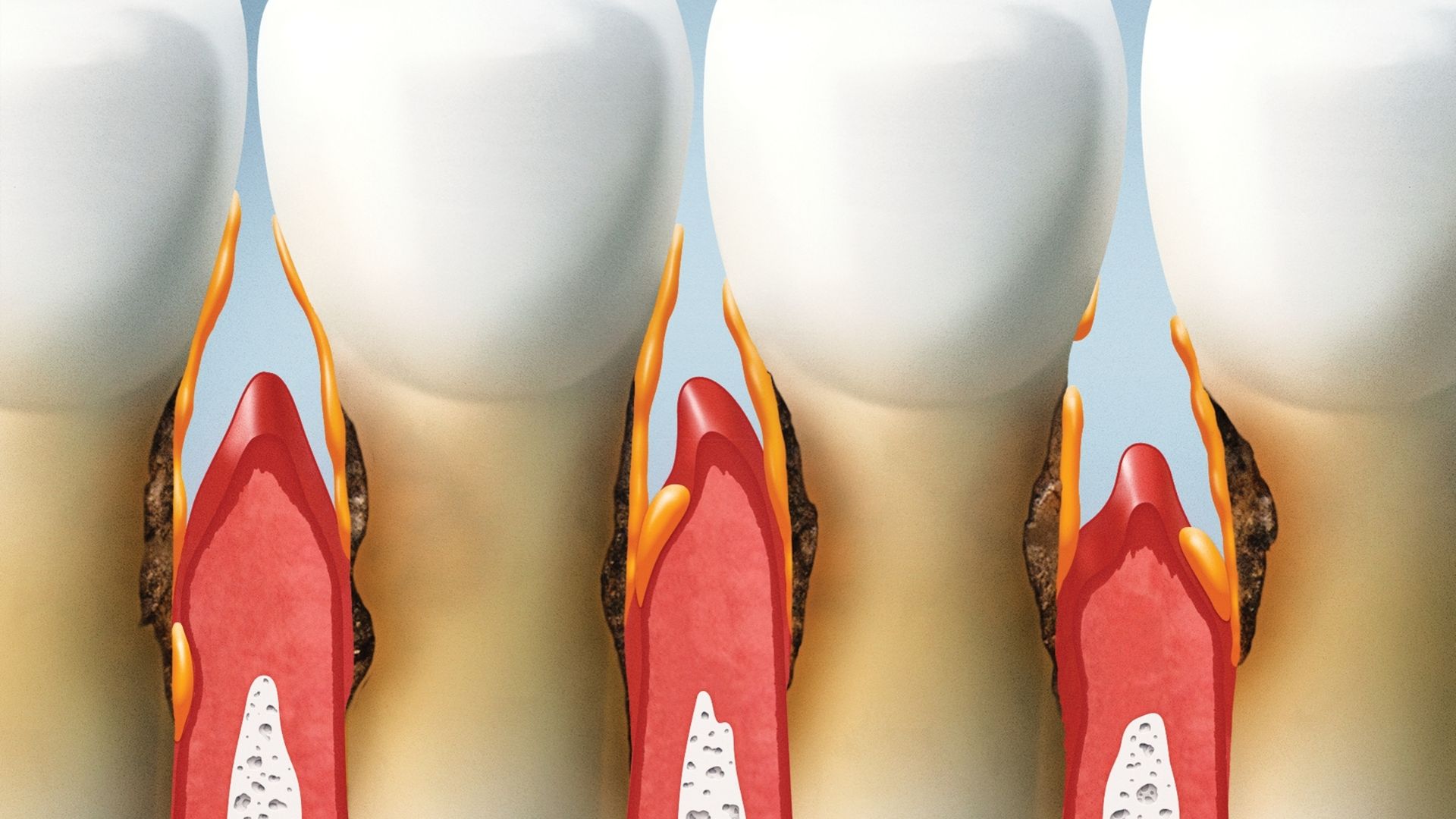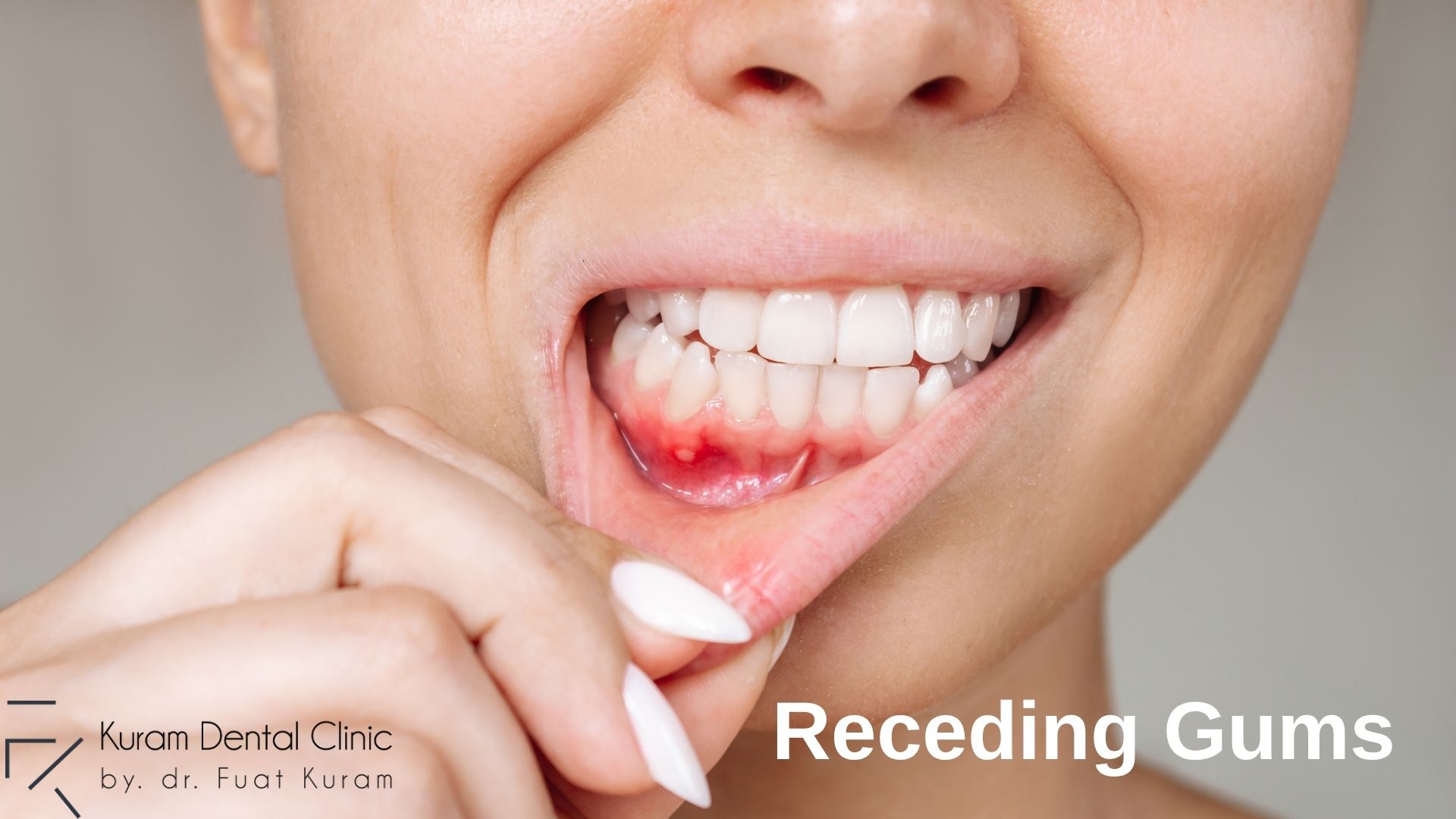Receding Gum
Receding gums are a more common condition that can lead to sensitivity, decay, and even tooth loss. According to the research, many adults over 30 have some form of gum disease, a major cause of receding gums.
But here's the thing! Many people remain unaware of their receding gums until the damage has already occurred. What causes it? Can we halt it? And most importantly, how can you protect your gums before it’s too late? Now, time to learn about gum recession!
What is receding gum?
Receding gums are when the gum tissue shrinks away from the teeth, exposing the roots. This causes sensitivity and makes teeth more vulnerable.
What causes it? Brushing too hard, gum disease, or even genetics. And no, gums don't grow back. Like a sweater unravelling at the edges, once gums recede, they won't fix themselves. If recession has started, you should visit the dentist.
Gingival recession?
Gingival recession is the medical term for receding gums. In other words, 'gingival recession' is the professional term, while 'receding gums' is the common way to say it. It means the gum tissue moves away from the teeth, exposing the roots.
Want a sample? Think of a blanket slipping off your feet at night! Once the cover is gone, the cold sets in. That's what happens when gums recede.
How to prevent it? To prevent it, brush your teeth gently, floss daily, and visit your dentist regularly.
Receding gum stages
Receding gum stages are:
- Early stage
- Moderate stage
- Advanced stage
Receding gums don't happen overnight. It's a slow process with different stages, and the sooner you catch it, the better.
Early stage: The gums start pulling back slightly. You may not notice it at first, but mild sensitivity to cold or hot drinks is an early sign.
Moderate stage: More of the tooth root becomes visible. Sensitivity increases, and you might see small gaps forming between your teeth and gums.
Advanced stage: The gums have pulled back significantly. The roots are exposed, teeth look longer and they may even start to feel loose.
Ever seen a cliffside slowly eroding over time? At first, it's just a small change, but if nothing is done, large chunks start breaking away. That's precisely what happens with receding gums.
What are the signs of receding gums in the early stages?
The following are some signs of gum recession:
- Loose teeth: gums no longer hold teeth as firmly in place.
- Sharp sensitivity: hot, cold, sweet, or spicy foods cause quick, sharp pain.
- Longer-looking teeth: more of the tooth becomes visible as gums pull back.
- Exposed Roots: the roots, normally covered by gums, become visible.
- Notches near the gums: a small groove or dip forms at the gum line.
- Colour changes: teeth may look different where the gums have receded.
- Wider gaps between teeth: gums no longer fill the spaces, making gaps more noticeable.
- Cavities near the gums: decay can form where the roots are unprotected.
If gum disease is the cause, you may also notice:
- Swollen or red gums: inflammation makes gums puffy and irritated.
- Bleeding when brushing: even gentle brushing can cause bleeding.
- Bad breath: bacteria buildup leads to persistent bad breath.
How to stop receding gums from getting worse?
Can I heal my receding gums?
| 7 important measures to prevent or stop gum recession |
| Brush gently |
| Floss daily |
| Use fluoride toothpaste |
| Avoid smoking |
| Eat gum-friendly foods |
| Manage teeth grinding |
| Visit the dentist regularly |
Once gums recede, they won't grow back. But you can stop it from getting worse.
Brushing too hard? Bad idea. Think of gums like fabric; scrubbing too rough wears them down. Use a soft toothbrush and go easy.
Flossing isn't just extra credit. It keeps bacteria from creeping under your gums. Skip it, and recession speeds up. Bleeding or swelling? That's your warning sign.
Already have a recession? Deep cleaning or gum grafts can help. Ignore it, and teeth may loosen or even fall out.
Protect your gums now, and they'll protect your smile for life!
What do receding gums look like?
Your teeth may look a little longer, and your gums may seem thinner. Over time, small gaps can appear, making teeth look more exposed.
Think of a shoreline slowly pulling back, revealing more land underneath. That's exactly what happens when gums recede.


Here's how receding gums typically appear:
| What receding gums look like |
| Longer-looking teeth |
| Thin gum line |
| Visible tooth roots |
| Small gaps form |
| Red or irritated gums |
| Bleeding when brushing |
| Sensitive teeth |
| Loose teeth |
How far can gums recede before teeth fall out?
Gums recede so far that teeth become loose and eventually fall out. But it doesn't happen overnight; it's a slow process.
At first, you might notice longer-looking teeth or mild sensitivity. As the gums pull back more, the bone underneath starts to shrink. And here's the real danger: gums don't just hold teeth in place. Bone does too. Once that support weakens, teeth can start wobbling like a fence post in soft soil.
Ever seen a tree with its roots exposed after heavy rain? Without enough support, it can tip over. The same goes for teeth.
The good news? Catching it early stops things from getting worse. Deep cleanings, gum grafts, or special treatments help save your teeth before it's too late.
Can dentures be fitted to receding gums?
Yes and no. Dentures can be placed on receding gums, but they might not stay secure. When gums pull back, the bone underneath shrinks too. And dentures? They need a solid foundation. Without enough support, they can slip, cause irritation, or even speed up bone loss.
Ever tried balancing a chair on an uneven floor? It might stay put for a while, but eventually, it wobbles and shifts. That's exactly how dentures behave on weak gums.
Wearing dentures over severe gum recession puts extra pressure on the remaining bone. Over time, they loosen, making eating uncomfortable and causing more damage.
So, what works better? Implant-supported dentures or gum grafting help create a stronger, more stable base. The sooner you act, the better your chances of keeping your smile intact!
Can you have dental implants with receding gums?
Yes, you can get dental implants with receding gums, but it depends on bone strength. Implants need enough healthy bone to anchor properly. If too much bone is lost, the implant won't hold.
Think of a nail in a weak wall; it might go in, but it won't stay secure. That's exactly what happens if implants are placed without enough support.
If your bone is still strong, implants can work well. If not, bone grafting helps rebuild the foundation. Then implants!
Dental treatments for gum recession
- Deep cleaning: removes plaque and bacteria to stop further damage.
- Gum grafting: rebuilds lost gum tissue using a small tissue transplant.
- Pinhole surgery: moves existing gum tissue over exposed roots without stitches.
- Tissue-stimulating gels: encourages natural gum regrowth.
- Bonding: covers exposed roots with a tooth-colored resin for protection.
- Orthodontics: moves teeth into better positions to reduce pressure on gums.
- Implants or dentures: used if teeth are lost due to severe recession.
Gum recession doesn't have a one-size-fits-all treatment. The right option depends on how much gum and bone loss has happened. Deep cleanings work for mild cases, while grafting or pinhole surgery helps restore more severe damage.
Maintenance of healthy gums
Healthy gums don't take much effort to maintain, but small habits make a big difference. A little extra care each day can prevent gum problems before they even start. Some important steps are below to keep your gums in top shape:
- Brush softly: scrubbing too hard wears down gums. Be gentle.
- Floss every day: skipping it lets plaque build up where your brush can't reach.
- Use the right toothpaste: fluoride or gum-care toothpaste keeps gums strong.
- Rinse with mouthwash: a good rinse washes away leftover bacteria.
- Drink plenty of water: a dry mouth makes gums more vulnerable.
- Eat healthy foods: vitamin C and omega-3s help keep gums firm.
- Quit smoking: It slows healing and weakens gum tissue.
- Cut down on sugar: less sugar means fewer bacteria attacking your gums.
- Relax your jaw: stress leads to teeth grinding, which damages gums.
- Pay attention to bleeding: gums shouldn't bleed when you brush. If they do, something's wrong.
- Use a soft toothbrush: hard bristles can actually push gums back.
- See your dentist regularly: catching gum issues early saves you trouble later.
- Stop grinding your teeth: too much pressure makes gums pull back.
- Watch for gum changes: if they look thinner or irritated, don't ignore it.
Frequently Asked Questions
Can gums grow back after a recession?
No, gums don't grow back once they recede. Once they're gone, they're gone. But don't panic! There are ways to fix it. Treatments like gum grafts can rebuild lost tissue, and pinhole surgery can reposition what's left. Like patching up a worn-out sweater.
How to avoid gum recession?
Preventing gum recession is easier than fixing it. The first rule? Be gentle. You can think hard brushing is a good way. No! It actually wears down gums over time. A soft-bristle toothbrush and light pressure are all you need.
Flossing isn't optional. Skipping it lets plaque sneak under the gums, causing inflammation and recession. And don't forget hydration! Dry gums are more prone to damage, so drink plenty of water.
Grinding your teeth? That's a fast track to gum problems. Too much pressure makes gums pull back. A nightguard can help protect them.
Ever seen a cliff slowly eroding from waves? That's what happens when gums face constant pressure. Protect them now, and they'll stay strong for years to come.
Can gum recession be fixed naturally?
Yes and no. No, once gums recede, they won't grow back on their own. That's the bad news. Yes! The good news? You can stop it from getting worse with the right care. Brushing too hard only speeds up the damage, so a soft toothbrush and gentle strokes are the way to go. Flossing daily is just as important! It clears out bacteria before they have a chance to eat away at your gums.
A healthy diet plays a big role, too. Vitamin C keeps gum tissue strong, and omega-3s help fight inflammation. Ever wondered why sailors lost their teeth back in the day? Lack of vitamin C. It's that essential. Staying hydrated also matters. A dry mouth makes gums more vulnerable, so drinking enough water keeps them protected.
Some natural remedies can help with gum health but won't reverse recession. Oil pulling may reduce bacteria, green tea can calm inflammation, and saltwater rinses help with swelling. But let's be real! None of these will bring lost gum tissue back. If the damage is serious, only professional treatments like gum grafts can fix it. The sooner you take action, the better your chances of keeping your gums healthy for life.
At what age do gums start receding?
Gum recession often starts after the age of 40, but it can appear much earlier, even in adolescence, sometimes as young as 10. This happens when the gums pull back, exposing the roots of the teeth. This makes teeth more sensitive and increases the risk of decay over time.
Can salt water reverse receding gums?
No, salt water can't reverse receding gums. But it can help reduce bacteria and soothe inflammation, keeping gums healthier.
What is good for receding gums?
Gentle brushing, flossing, fluoride toothpaste, a healthy diet, and regular dental check-ups help protect receding gums. For severe cases, gum grafts or professional treatments may be needed.
Why choose us for dental treatments?
Because your oral and dental health cannot be neglected.
At Kuram Dental Clinic, we combine high-level dental expertise with a warm, patient-centred approach. We use the latest technology to achieve natural and long-lasting results in all oral and dental treatments. We offer first-class dental treatment in a stress-free, affordable, comfortable environment.
Please contact Kuram Dental in Antalya, Turkey, to get additional information.

